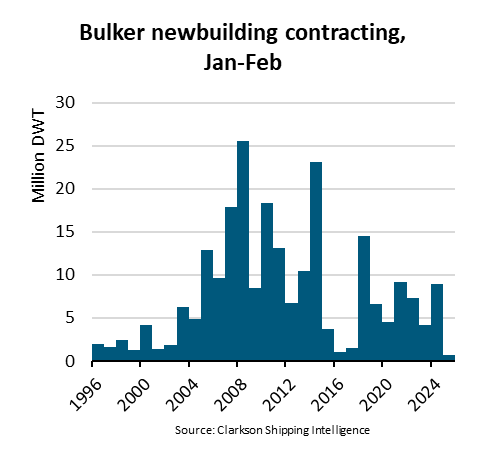
The laden 45,000MT deadweight tanker had anchored in a bay outside an Asian port. It was late summer and the vessel was waiting for a berth to discharge its cargo.
Weather warnings about an approaching typhoon for the area where the tanker was anchored had been broadcast for two days prior to the vessel arriving at the anchorage. The tanker had anchored with 7 shackles of chain in the water. There were some islands around the anchorage and the Master considered the anchorage would be a suitable place to ride out the approaching typhoon, which had been upgraded to a category 2 typhoon.
Around 04.00 the following morning the wind increased to Beaufort scale 9 and the Master told the Chief Officer to pay out 2 more shackles of chain in the water, making a total of 9. During the morning the wind continued to increase to Beau- fort scale 12 which caused the anchor to drag.
The Master tried to manouver the vessel into the wind using the engines. However, two hours later the wind had increased even further, and it was not possible to turn the bow into the wind with the vessel at anchor. The vessel was now turned so that the wind was acting on the broad- side of the dragging vessel.
The Master ordered the Chief Officer to heave up the anchor. However, this was not possible as the vessel was dragging. The windlass was not designed for these environmental loads and is only designed to lift the weight of the anchor and three shackles of chain (82.5m) in calm water.
At this point there was nothing the crew could do, and the vessel ran aground on one of the islands surrounding the anchorage.
The Master sent a distress signal and the crew abandoned the vessel. Shortly after abandoning the vessel the crew was rescued by a local tug. Fortunately, there was no pollution or injuries to crew.
In our experience, it is not uncommon for crews to be unaware of the environmental loads for which anchoring equipment is designed. Class societies have unified rules for the design of anchoring equipment, and it is essential that the crew is aware of these limits. The maximum envi- ronmental loads for which anchoring equipment is designed are, current velocity: max. 2.5m/s (about knots), wind velocity: max. 25m/s (about 48 knots or about force 10 on the Beaufort scale), no waves (sheltered waters).
A category 2 typhoon, as in this case, will have a predicted wind velocity of about 45 m/s (about 87 knots) which is almost twice the load the anchor- ing equipment is designed for.
Make sure that the deck officers know the maximum environmental loads the anchoring equipment is designed for, and make sure this is reflected in the shipboard’s anchoring procedures.
Source:The Swedish Club
The opinions expressed herein are the author's and not necessarily those of The Xinde Marine News.
Please Contact Us at:
admin@xindemarine.com


 Ningbo Containerized Freight Index Weekly Commentar
Ningbo Containerized Freight Index Weekly Commentar  Ningbo Containerized Freight Index Weekly Commentar
Ningbo Containerized Freight Index Weekly Commentar  Ningbo Containerized Freight Index Weekly Commentar
Ningbo Containerized Freight Index Weekly Commentar  BIMCO Shipping Number of the Week: Bulker newbuildi
BIMCO Shipping Number of the Week: Bulker newbuildi  Ningbo Containerized Freight Index Weekly Commentar
Ningbo Containerized Freight Index Weekly Commentar  Ningbo Containerized Freight Index Weekly Commentar
Ningbo Containerized Freight Index Weekly Commentar